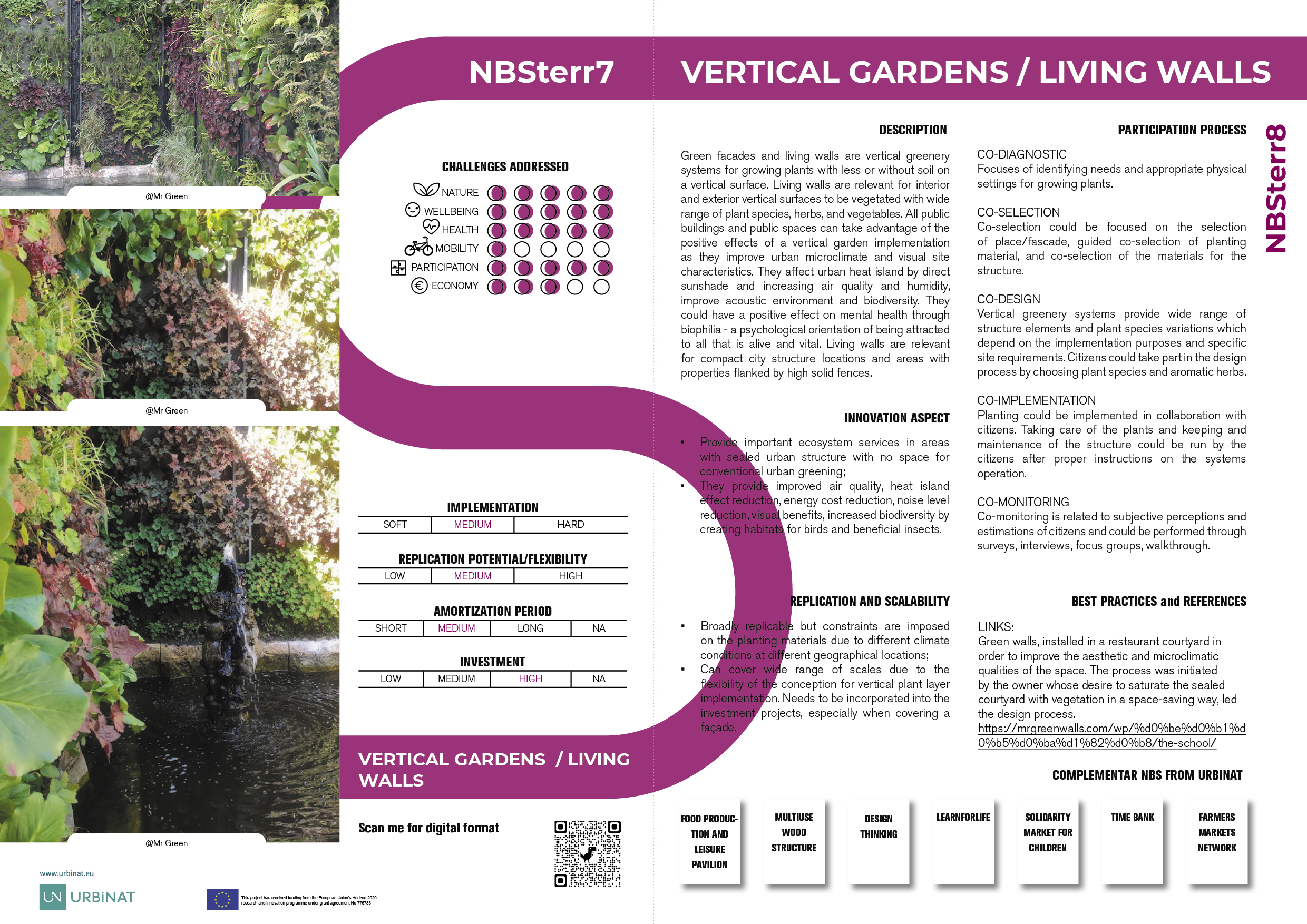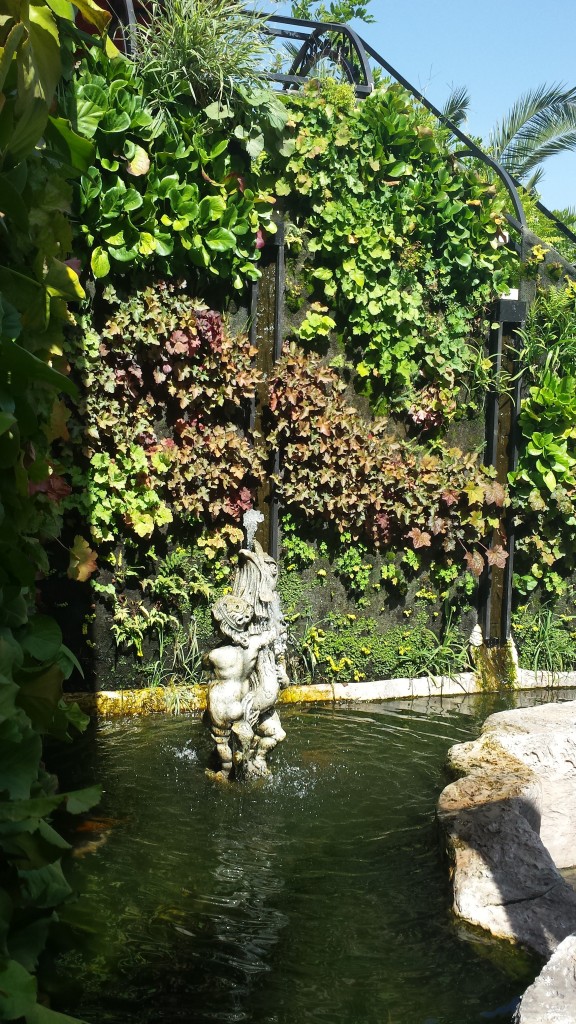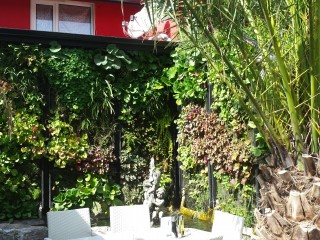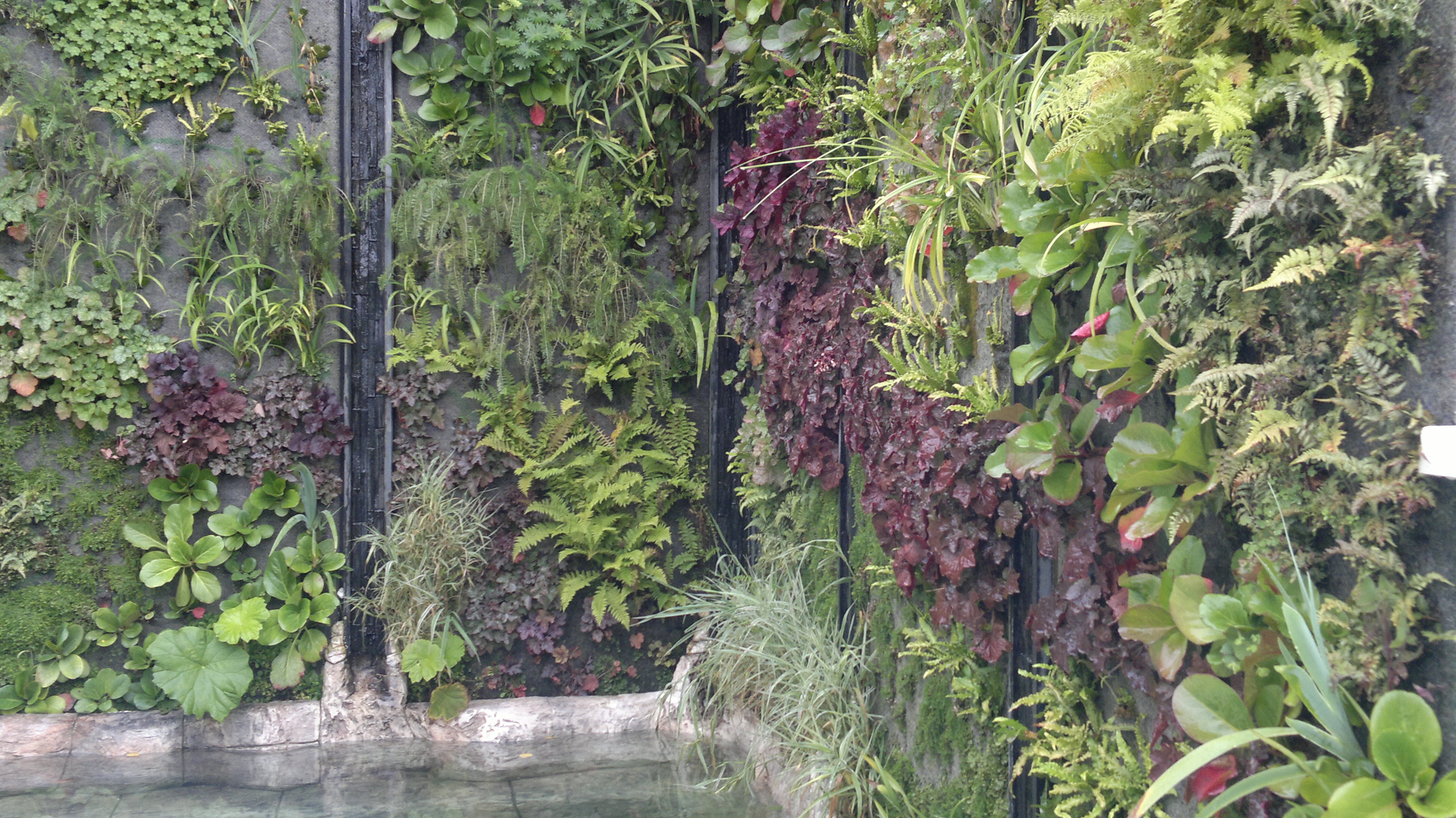Vertical Gardens - Living Walls
CHALLENGES ADDRESSED
Score impact
Nature
Wellbeing
Health
Mobility
Participation
Economy
DESCRIPTION
Green facades and living walls are vertical greenery systems for growing plants with less or without soil on a vertical surface. Living walls are relevant for interior and exterior vertical surfaces to be vegetated with wide range of plant species, herbs, and vegetables. All public buildings and public spaces can take advantage of the positive effects of a vertical garden implementation as they improve urban microclimate and visual site characteristics. They affect urban heat island by direct sunshade and increasing air quality and humidity, improve acoustic environment and biodiversity. They could have a positive effect on mental health through biophilia – a psychological orientation of being attracted to all that is alive and vital. Living walls are relevant for compact city structure locations and areas with properties flanked by high solid fences.

[PDF Download] Vertical Gardens - Living Walls
Green facades and living walls are vertical greenery systems for growing plants with less or without soil on a vertical surface. Living walls are relevant for interior and exterior vertical surfaces to be vegetated with wide range of plant species, herbs, and vegetables. All public buildings and public spaces can take advantage of the positive effects of a vertical garden implementation as they improve urban microclimate and visual site characteristics. They affect urban heat island by direct sunshade and increasing air quality and humidity, improve acoustic environment and biodiversity. They could have a positive effect on mental health through biophilia - a psychological orientation of being attracted to all that is alive and vital. Living walls are relevant for compact city structure locations and areas with properties flanked by high solid fences.
INNOVATION ASPECT
- Provide important ecosystem services in areas with sealed urban structure with no space for conventional urban greening;
- They provide improved air quality, heat island effect reduction, energy cost reduction, noise level reduction, visual benefits, increased biodiversity by creating habitats for birds and beneficial insects.
REPLICATION AND SCALABILITY
- Broadly replicable but constraints are imposed on the planting materials due to different climate conditions at different geographical locations;
- Can cover wide range of scales due to the flexibility of the conception for vertical plant layer implementation. Needs to be incorporated into the investment projects, especially when covering a façade.
PARTICIPATION PROCESS

-
1
CO-DIAGNOSTIC
Focuses of identifying needs and appropriate physical settings for growing plants.
-
2
CO-SELECTION
Co-selection could be focused on the selection of place/fascade, guided co-selection of planting material, and co-selection of the materials for the structure.
-
3
CO-DESIGN
Vertical greenery systems provide wide range of structure elements and plant species variations which depend on the implementation purposes and specific site requirements. Citizens could take part in the design process by choosing plant species and aromatic herbs.
-
4
CO-IMPLEMENTATION
Planting could be implemented in collaboration with citizens. Taking care of the plants and keeping and maintenance of the structure could be run by the citizens after proper instructions on the systems operation.
-
5
CO-MONITORING
Co-monitoring is related to subjective perceptions and estimations of citizens and could be performed through surveys, interviews, focus groups, walkthrough.
Best Practices & References
LINKS:
Green walls, installed in a restaurant courtyard in order to improve the aesthetic and microclimatic qualities of the space. The process was initiated by the owner whose desire to saturate the sealed courtyard with vegetation in a space-saving way, led to the design process.



